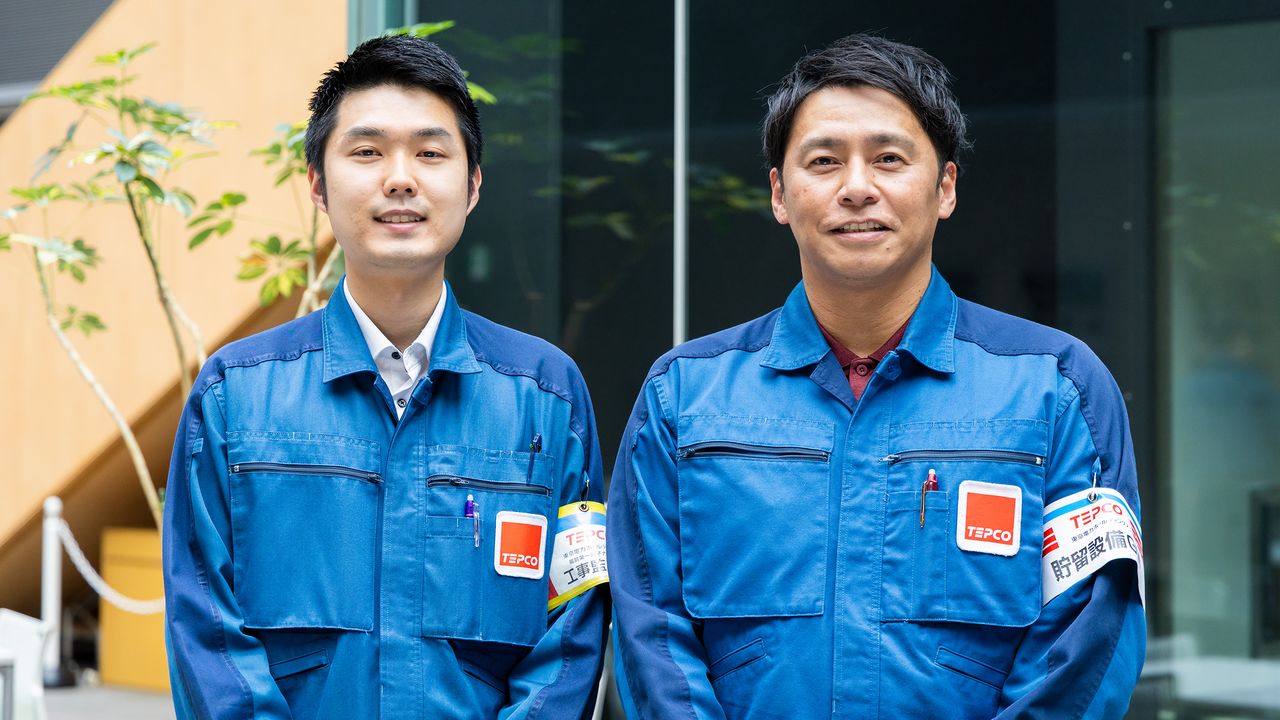
Fukushima Daiichi Workers Share Their Stories
Disaster Society Work- English
- 日本語
- 简体字
- 繁體字
- Français
- Español
- العربية
- Русский
Entering Junior High, Experiencing the Earthquake
For several years, Sasaki Kazuhito (27) has been involved in operating and maintaining ALPS, the Advanced Liquid Processing System, at Fukushima Daiichi Nuclear Power Station, which removes radioactive substances from highly contaminated wastewater. When the Great East Japan Earthquake struck in 2011, he was a seventh grader in Iwaki, Fukushima Prefecture.
Fortunately, his house was spared from tsunami damage, and he didn’t have to live in shelters. But Fukushima Daiichi, which experienced a hydrogen explosion, was only about 40 kilometers away from Iwaki. Some of his classmates evacuated to other prefectures, and the fear of radioactive contamination was very real.
Fukushima Prefecture was stigmatized as if the entire area was contaminated. News of the harmful rumors about its agricultural and livestock products, along with the discrimination faced by evacuees, reached even the ears of children.
“I wasn’t personally the direct target of any harmful rumors, but it was painful to witness as a fellow Fukushima resident,” says Sasaki.
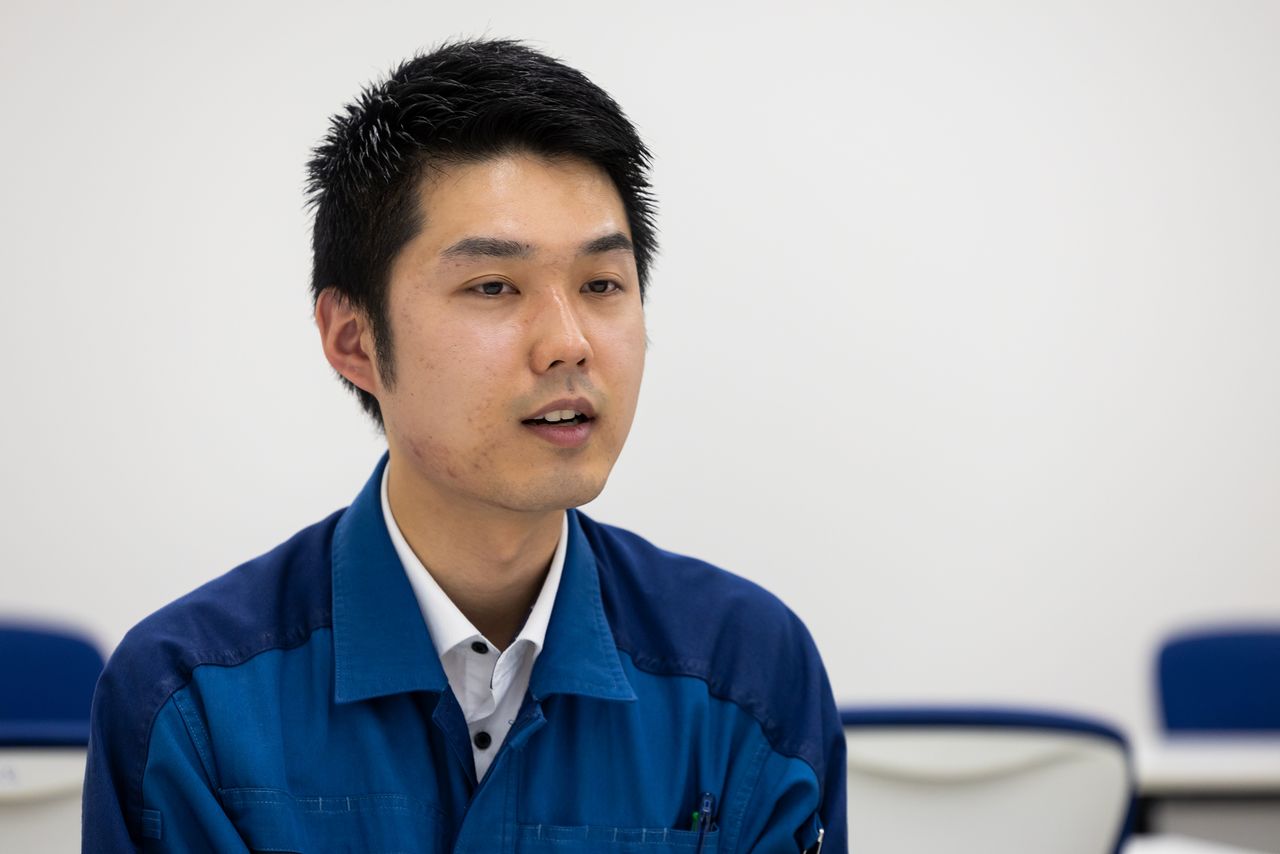
Sasaki Kazuhito. (© Hashino Yukinori)
Confronting What Happened in His Hometown
After the nuclear power plant accident, the Fukushima National College of Technology, a five-year institution Sasaki entered after junior high, shifted its focus to training personnel for decommissioning work.
“Having taken classes related to nuclear decommissioning, I started to consider Fukushima Daiichi as a potential workplace, and my lab professor also suggested it,” he recalls. “Ultimately, my desire to be part of the reconstruction effort in Fukushima grew strong.”
His parents were surprised to learn that he intended to work for TEPCO and initially opposed his choice. They were not only worried about the public hostility towards the company responsible for the accident but were also deeply concerned about the safety of their son’s workplace.
Nonetheless, he managed to convince his parents, and in the spring of 2018, he joined TEPCO.
“Many people have left Fukushima because of the earthquake and nuclear accident. I don’t imagine it’s easy to get people from other prefectures to help with the decommissioning. I can’t just ignore what’s happening in the place I was born and raised, though. There must be something I can do.”
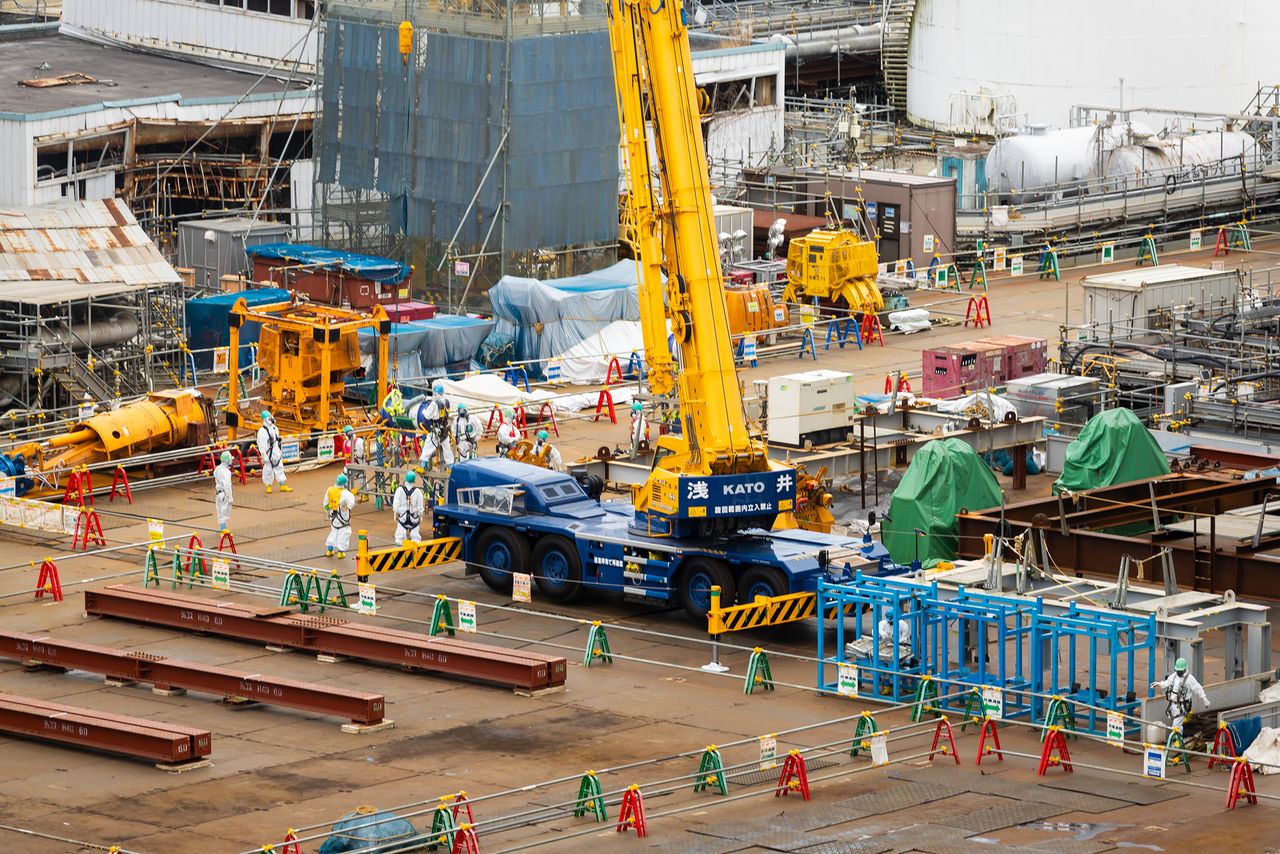
Many are involved in the decommissioning effort, including those dispatched from partner companies. (© Hashino Yukinori)
A Workplace That Requires Patience
“He overcame his parents’ opposition to work here. He has a strong sense of purpose and it’s admirable,” says Satō Yōhei (48), after hearing what Sasaki had to say. Satō, who is in charge of maintaining ALPS-treated water tanks and other related equipment, also had these words of encouragement to offer Sasaki: “This is a workplace where you have to have a lot of patience. I’ve seen many who couldn’t handle it and quit. Above all, I’d like to see you persevere.”
Satō was working as an operator at Fukushima Daini Nuclear Power Station during the 2011 disaster. Located just 12 kilometers south of Fukushima Daiichi, Daini was similarly struck by a tsunami. This severely damaged the nuclear reactor cooling facilities facing the ocean. However, since the external power supply was maintained and the reactors could be cooled, they were able to avert the type of catastrophe that unfolded at Daiichi.

Satō Yōhei. (© Hashino Yukinori)
Even so, the situation was chaotic for some time after the earthquake. Satō sent his family to stay with relatives in another prefecture as he lived on-site at the power plant for about a month. “Fukushima Daiichi, where the explosion happened, was in the news every day as a major story, but Daini was also in a critical condition due to the tsunami damage,” he recalls. “All I could do was focus on the work in front of me.”
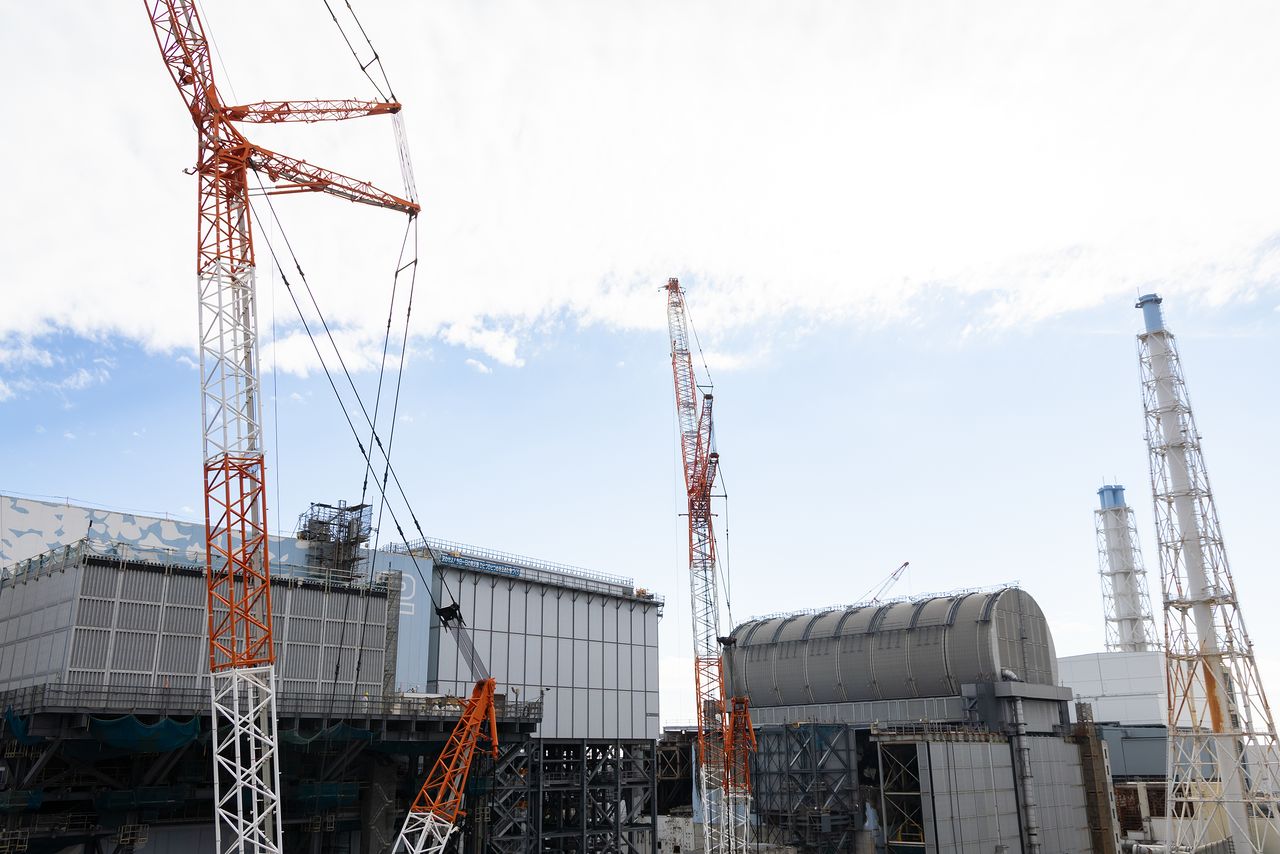
Fukushima Daiichi units 2 and 3 in preparation for upcoming fuel removal. (© Hashino Yukinori)
Dedication to Completing Decommissioning
Two years after the earthquake, Satō was transferred to Fukushima Daiichi. Both Satō and Sasaki work in handling treated water, though their duties differ. The treated water, stored in numerous tanks on the premises at Fukushima Daiichi, has become a major political issue. Its first release in the summer of 2023, in line with government policy, was met with fierce opposition, both domestically from local fishermen and globally.
Both approach their work with a steady attitude. For Satō, his role is to build and maintain the necessary facilities. “I just have to give it my all.” Meanwhile, Sasaki seeks to accept a range of perspectives. “In a perfect world, everyone would understand, but I recognize that each person has their own viewpoint.”
What unites these on-site workers is their deep pride in their commitment to the safe decommissioning process.
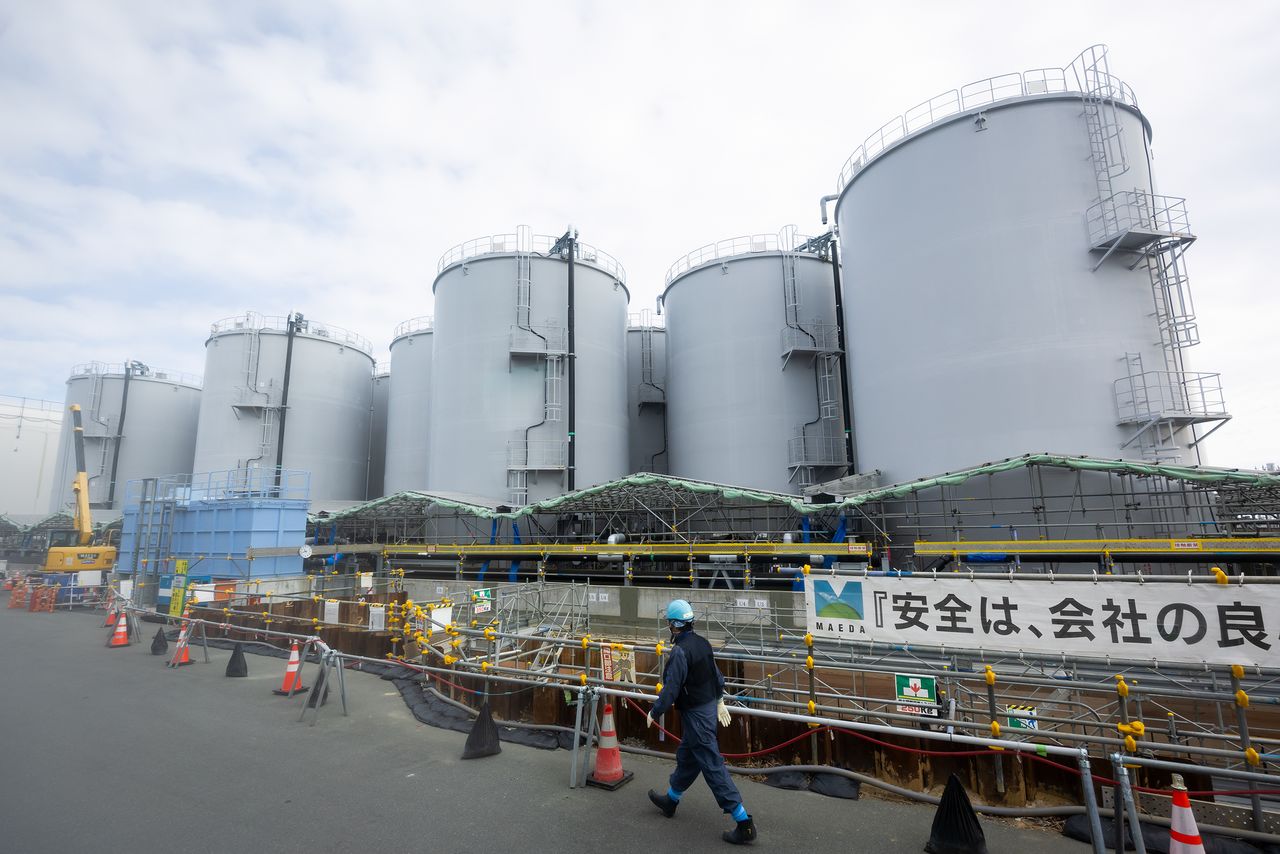
Tanks used for homogenizing ALPS-treated water before ocean discharge. (© Hashino Yukinori)
Now that 14 years have passed since the earthquake, the time grows closer when TEPCO employees who experienced the earthquake and persevered through the challenging moments of the nuclear accident will reach retirement age.
“I want to see it through so that the decommissioning of Fukushima Daiichi is completed in my generation,” says Sasaki. The process, expected to take more than 20 years, will increasingly rely on those like him, who joined after the accident.
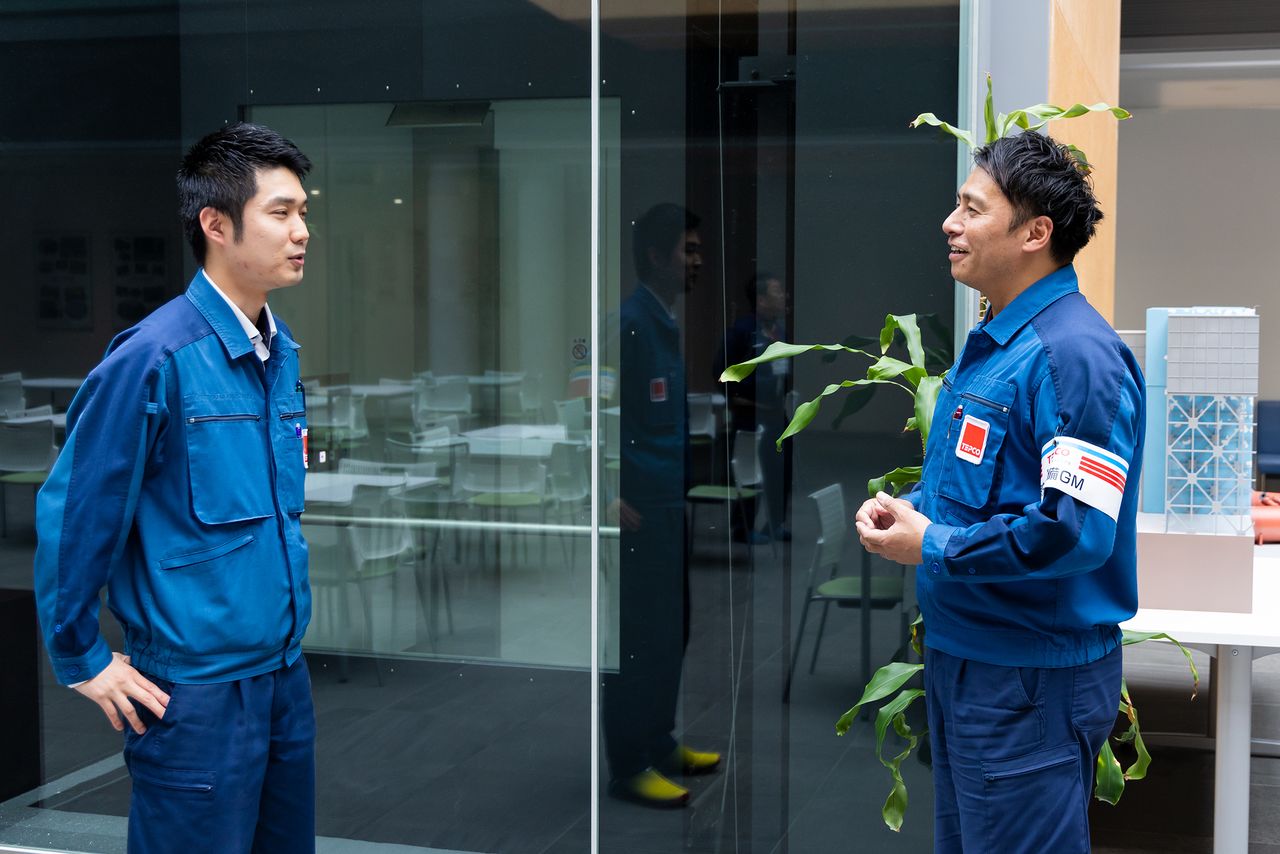
Sasaki Kazuhito (at left), who joined TEPCO after the earthquake, and Satō Yōhei, who was working at Fukushima Daini at the time of the earthquake, are both involved in handling treated water at Fukushima Daiichi. (© Hashino Yukinori)
(Originally published in Japanese. Banner photo: Sasaki Kazuhito, at left, and Satō Yōhei. © Hashino Yukinori of Nippon.com.)
